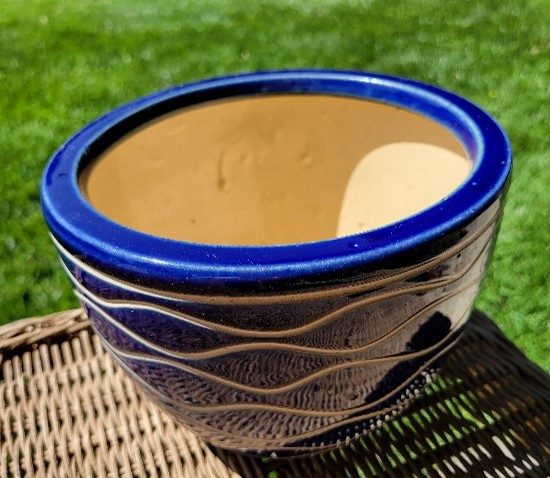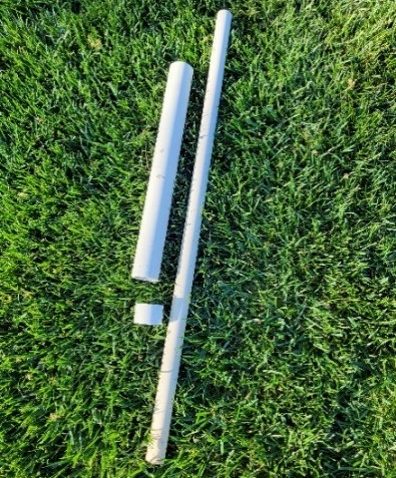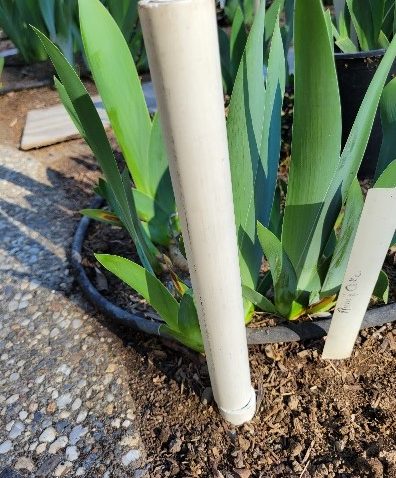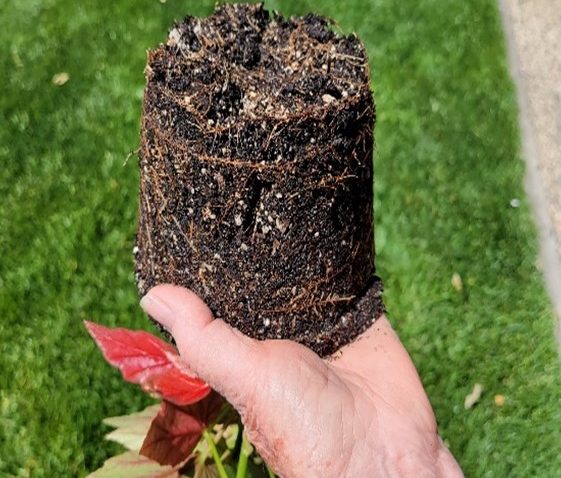
by Stan Logan | May 8, 2022 | Container plants
How do you tell when a potted plant needs repotting? There are several clues. Perhaps your soil moisture tester is no longer able to penetrate the soil. Maybe your plant has to be watered every day. You may find that the water you add to the pot takes forever to soak in.
The sure way to find out is to pop the plant out of its pot. When the pot is small this chore is easy—simply turn it upside down and rap the edge of the pot on a hard surface like your potting bench. Don’t forget to have your hand beneath the plant to catch it when it falls out! Now check the roots. If they are crowding around the edges, it’s time to repot. Now if you have a larger pot, simply get a strangle hold on the basal neck of the plant and tap the top of the pot. We find a rubber mallet works well with this, but a short piece of wood like a 2 x 4 would work.
If you have a plant in a pot that has a constricted top like in the photo below, you have a problem. When you plant in such a pot, repotting will be a real chore. Your two main options are to cut down through the roots all around the periphery with a narrow blade, or you could simply break the pot. A third option is simply to let the plant die a slow, agonizing death. Of course, you could shorten the demise with a quick severing with a pruner. Then you are merely left with the struggle to remove the impacted remains.
Now once you perfect plant popping technique, you may consider using it while checking out the condition of a plant at a nursery before purchase. It would not be wise to invest a great deal in a plant that has been kept in the same pot too long and is now root bound.
LaVille is a professional propagating plant popper and uses this technique constantly to tell when a plant needs repotting. With a little practice you could be a proper popper too.
Stan, The Popper Man
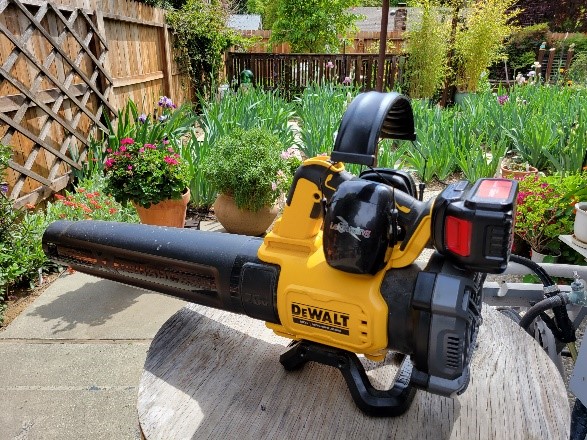
by Stan Logan | May 7, 2022 | Garden tools

DeWalt Cordless Leaf Blower
I put off buying a cordless leaf blower for years. Then one day, feeling self-deserving, I took the plunge and ordered the DeWalt leaf blower you see below. It really sounded good. It was Amazon’s choice. It had a “high efficiency brushless motor”. It was lightweight. It had a variable speed trigger. Finally, it had “low noise during operation (66 decibels)—ideal for noise sensitive regions and properties”. Now, I found everything above to be true . . except for the last claim. I think I just bought a lemon. I read through the reviews for this machine, and not one of them mentioned severe noise levels. LaVille looked up decibel levels and found that 60 decibels is the noise level for normal conversation between two people 1 meter apart. 85 decibels is the road noise you experience inside a car.
So, what do I do? I wear the hearing protection you see perched on the blower. LaVille will not remain outdoors when the blower is running, so I wait until she is inside the house. I try not to use the machine on the weekends and instead blow in the middle of the day during the week.
Yet, I still would recommend this blower for you—my machine must simply be a lemon. It is so easy to grab this blower and immediately clean up a small area. At lease once a week I will touch up the front yard to keep it looking respectable. The machine is light and the speed trigger works really well. You will want a second battery and the DeWalt is rather expensive. Being cheap, I ordered 2 off brand batteries at ½ the price of the DeWalt, and I got what I paid for—not nearly the quality of the original DeWalt battery.
So, if you have a corded leaf blower, you will really be happy with a battery powered blower. No more dragging that cord around doing all kinds of damage. No cord that wheels just love to trap. No twisted cord to wind up and put away. You can go anywhere! Take it with you on vacation. Give the inside of your car a quick detailing by opening the doors and blowing all the trash out. I wouldn’t suggest you try the same with your house though.
If you do order this DeWalt blower, immediately send it back if you find it is a screamer—I wish I had.
Stan, The Blower Man

by Stan Logan | May 6, 2022 | Garden tools, Safe Gardening
Well, of course you have gloves. No gardener has no gloves! So, I am a little reluctant to suggest that you buy more gloves. You have probably gone through a lot of gloves in your gardening experience and have settled on a pair that seems perfect for you. But. . . if you need new gloves, I have a suggestion for you. This is the working glove made by MaxiFlex. I came across this glove at a garage sale years ago. This guy was giving them away, so how could I resist? The gloves I picked up sat in a box along with a variety of others for years until I finally, for some reason, tried them out. Their ugly appearance had put me off, but likely it was the fact that I couldn’t find my favorite gloves that caused me to make the plunge. In any case, these are now my go-to gloves.
So, why would I suggest these gloves for you? They appear to be waterproof. They’re not. They look like they would protect your hands from thorns. They do not. But if you slip one on, you will find that they fit . . . like a glove. They are really flexible (duh). The insides are lined with some kind of soft fabric. There are little dots of nitril covering the palm side that give you good grip. They are quite durable. You can jam your hand down through the soil to grab the root of a weed and not have to worry about creating a hole in the glove fingers. They absorb skin moisture so you don’t end up with a serious case of slimy hand.
If you are in need of a new pair of gloves, they are available on Amazon. By chance, the particular kind I have is FlexiGlove Endurance. It appears you are unable to buy just one pair of gloves, but a set of 3, for instance, would probably last a lifetime—however long that may be. You will see that they are rather inexpensive. Note that you can purchase your choice of color, as long as that choice is black. So your gloves may not color coordinate with the rest of your gardening garb, but I think you will find the sacrifice is worth it. So, I think you should give these gloves a try. If you don’t like them, you could always give them to LaVille—she of much smaller hands than I.
Stan, The Ugly Glove Man

Maxi FlexiGlove
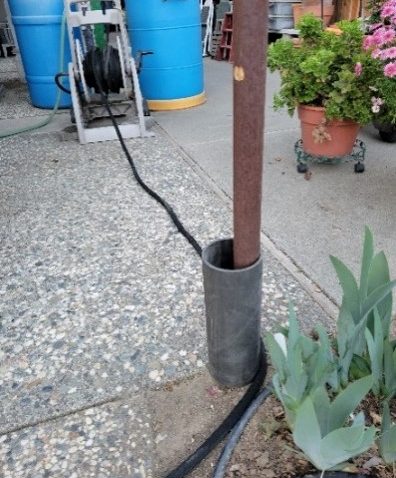
by Stan Logan | May 5, 2022 | Irrigation
Dragging a hose around the garden can be an unpleasant if not a destructive chore. There are spool shaped devices that can be staked into the ground that can guide the hose around the garden. I have never tried one, but I suspect that the hose may not remained trapped in the spool. Below you can see two setups for keeping a hose away from plants. The first one guides the hose around a metal pole that is supporting shade fabric. The second one is one you might consider installing. It consists of a 2 feet length of ½ inch pvc hammered into the ground surrounded by a 1 inch length and a 1 foot length of 1 inch pvc. The 1 foot length pivots on top of the 1 inch piece.
Now, you can buy ½ inch and 1 inch pvc at Home Depot or Lowes, but they come in 10 foot lengths. If you would like to set up your own system, I have both sizes that I can cut for you. Oh, I have the 5” and 3 ½” ABS pipe if you want to construct hose guides out of them. I don’t throw anything away. You could spray paint your device a color to make it blend into the garden, but I prefer the white in order to avoiding tripping over it.
Stan, The Hoarding Man
P.S. I hope you will take me up on my offer. I would love to help you protect your valued plants from that dratted hose.
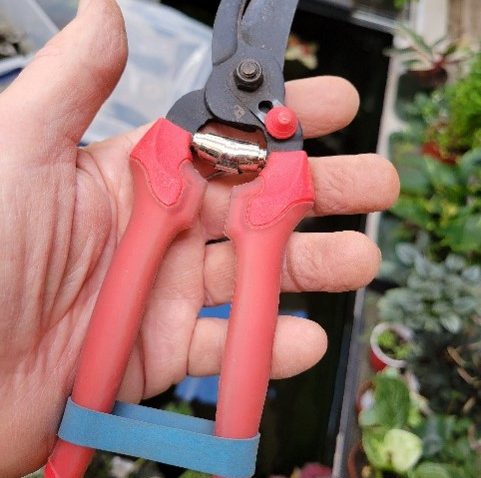
by Stan Logan | May 4, 2022 | Garden tools
Do you have a pruner that no longer has the part that locks it closed? Well, I have a solution for you. I was sharpening tools at the Shepard this last weekend, when two pruners came in that were kept closed with a rubber band—not just an ordinary band—but the wide kind you occasionally find bundling fresh produce. Although I hardly ever throw anything away, my supply of veggie bands was limited to two. Neither were strong enough to close the pruner blades, but perhaps you will have a stash with the proper sized band. Perhaps you noticed in the photo that the pruner lock was still there. I simply didn’t have a pruner with a missing lock. How ‘bout the spot of rust on the blade? Shameful huh? I removed it immediately. Did you notice the dirty hand? Hey—I’m working with tools and getting ready for the next sharpening event at the Gardener’s Market. What, you may wonder, would I do with a rubber band when it’s not in use on the pruner? Just wrap it around 2 fingers.
Please let me know if you have some small sized bands that you don’t need that I could use for pruners that arrive for sharpening without locks. How about a section of bike inner tube—mine was too small. Anyway, I think it would be a pleasant surprise improvement for my tool sharpening clients.
Stan, The Tool Man

Rubber band keeps pruners closed


